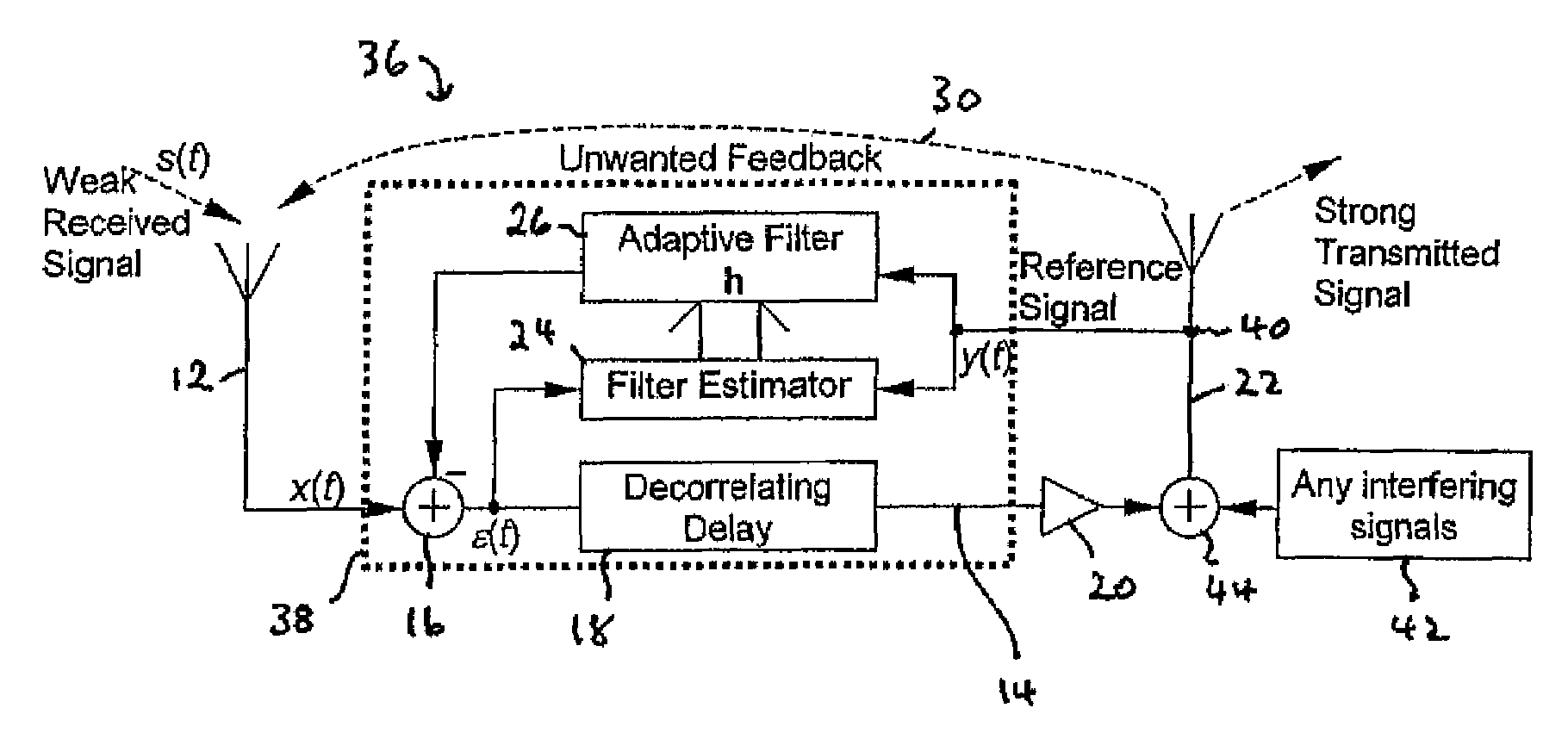On-channel repeater
a repeater and channel technology, applied in the field of broadcast transceivers, can solve the problems of direct interference of intermodulation products from adjacent channels, inability of domestic receivers to successfully demodulate wanted channels, instability and relaxation oscillation, etc., to avoid instability caused by parasitic coupling
- Summary
- Abstract
- Description
- Claims
- Application Information
AI Technical Summary
Benefits of technology
Problems solved by technology
Method used
Image
Examples
Embodiment Construction
[0019]An on-channel repeater 36 embodying the invention will now be described in more detail. Referring to FIG. 2, much of the structure of the processor 38 is as described for the processor 28 of FIG. 1. That is to say the transceiver 36 has a receiving antenna 12 which is coupled to an amplification path 14 which includes an adder 16, a decorrelating delay 18, and an amplifier 20. The output of the amplifier is applied to a transmitting antenna 22. A reference signal is applied to a filter estimator 24, which also receives the output of adder 16, and an adaptive filter 26, which applies an output to the subtractive or inverting input of adder 16. The filter estimator 24 generates filter coefficients which are applied to the adaptive filter 26.
[0020]The differences from FIG. 1 are first that in this case the reference signal, that is the input to the adaptive filter 26 and the reference input to the filter estimator 24, are taken not from within the processor 38 but rather from the...
PUM
 Login to View More
Login to View More Abstract
Description
Claims
Application Information
 Login to View More
Login to View More - R&D
- Intellectual Property
- Life Sciences
- Materials
- Tech Scout
- Unparalleled Data Quality
- Higher Quality Content
- 60% Fewer Hallucinations
Browse by: Latest US Patents, China's latest patents, Technical Efficacy Thesaurus, Application Domain, Technology Topic, Popular Technical Reports.
© 2025 PatSnap. All rights reserved.Legal|Privacy policy|Modern Slavery Act Transparency Statement|Sitemap|About US| Contact US: help@patsnap.com



